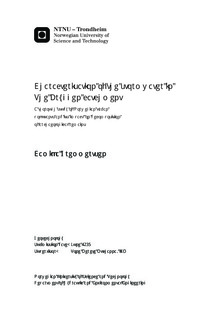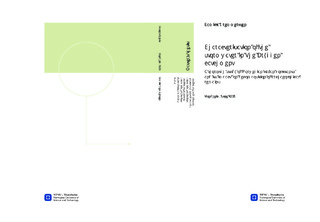| dc.description.abstract | Increased urbanization leads to more impermeable surfaces.Togther with climate changs with more intensive precipitation, more frequent urban floodings should be expected in the near future. As undreground convey systems have proven to be inadeqate, leading to several combined sewage overflows each year, new innovative stormwater management devices are relevant and also getting more recongnition.Raingardens, a planted depression, work as local stormwater management and allows water to infiltrate into the ground. A raingarden is planned on The Bryggen in Bergen, Norway. The Bryggen has struggled with lowering of the groundwater table, causing settling of overlaying buildings and increased decomposion of underlayning protected archaeological remains.The raingarden will be fed with stormwater from the catchment above The Bryggen.Microorganisms in the ground are responsible for decay of the archaeological remains, it was therefore importante to characterize the stormwater and indetify potential treaths to the archaological remains.It was found that stromwater from the impervious surfaces at The Bryggen catchment varies withlocation, surface use and within rain events. Different roofing material and traffic volume have differenteffects on pollutant distribution and concentration. The road Ovregaten with the most traffic (5001\--10 000 vehicles pr day) had the highest pollution levels for 8parameters (TSS, Conductivity, total P, PO^4-P, Cu, Ni Zn and Cu), while the smaller road Koren Wibergsplass had the highest pollution levelon one parameter (Pb).The roof surfaces had signigicantly lower pollutant levels, but does notachieve insignificant pollution level for recieving waters according the The Climate and Pollution Directorate in Norway. An estimated value for monthly TSS was 654 kg.The catchment had a minimum volume percent of particles with diameter below 1.2 micro m at 70% for S2, 10% for S6, while S3 and S4 had a maximum at 15% and 30% respectivley. Comparing filtrated and unfiltrated heavy metal samples for Overgaten it was shown that mimimum 65% of the metals was particle bound, while a value of 75% particle bound metals were more common.Through litterature review of pollutant retension in raingardens, it is estimated thatthe planned raingarden, with its high content of organic material will be able to retainheavy metals concentrations from 55% to 99%. It is suggested that the stormwater from the large road is not utilized in feeding the groundwater, due to the high pollutant level. No clear answer regarding sulfates and dissolved oxygen level in the effluent of the raingarden was found. | nb_NO |

